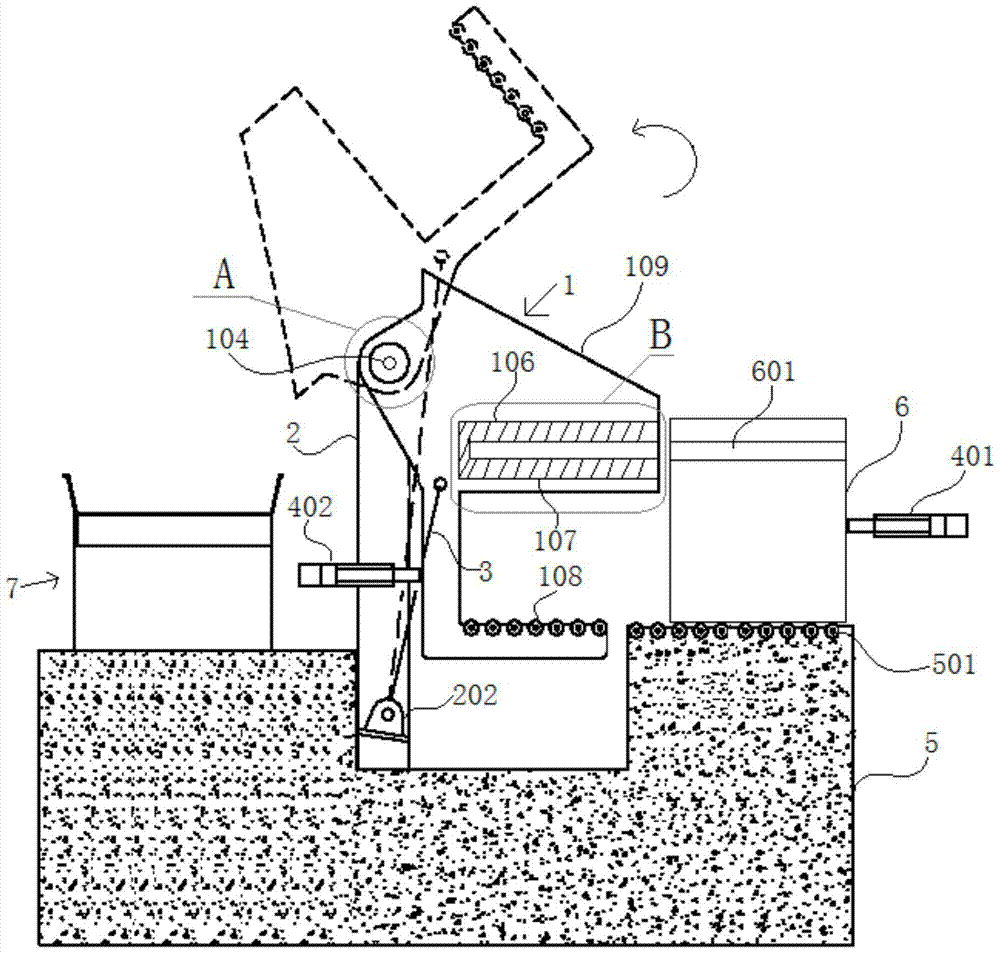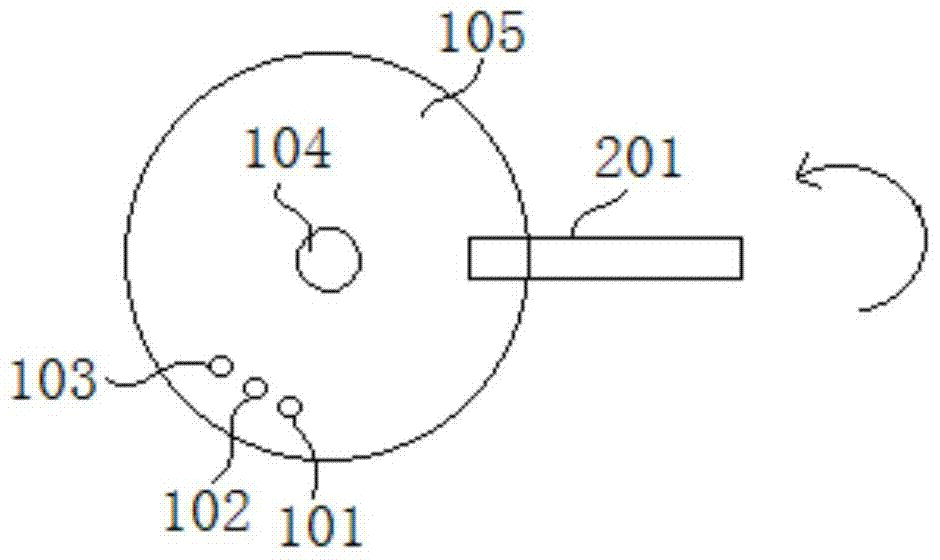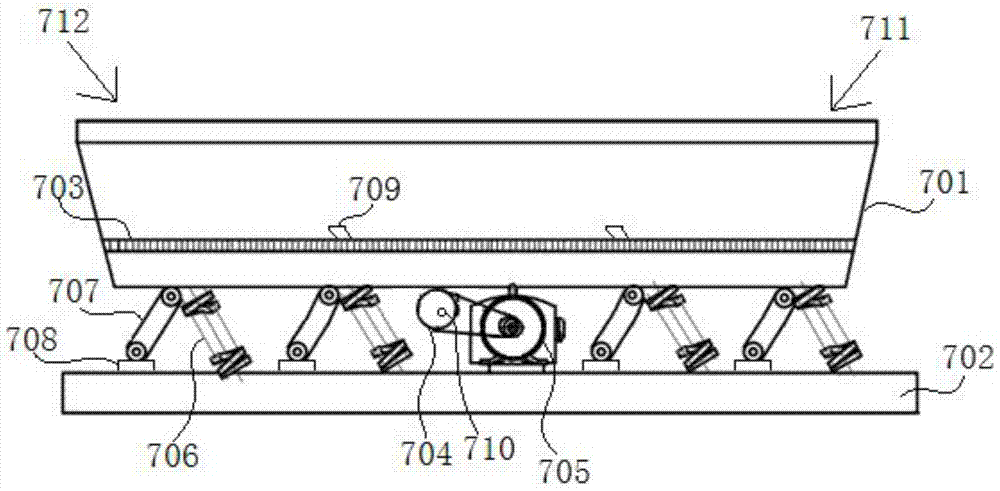A kind of turning box desanding system for wear-resistant parts casting
A technology of wear-resistant parts and box turning, which is applied in the direction of casting molding equipment, molding machines, manufacturing tools, etc. It can solve the problems of unfulfilled sand removal requirements, high manufacturing costs, and complicated structure of vibration shakeout machines, and achieve reduction The effect of manual workload, energy saving and precise positioning
- Summary
- Abstract
- Description
- Claims
- Application Information
AI Technical Summary
Problems solved by technology
Method used
Image
Examples
Embodiment 1
[0047] Combine Figure 1~3 , The box turning and sanding-out system for casting wear-resistant parts of this embodiment includes a box turning device and a sanding device 7. The flask turning device includes a rotating arm 1, a frame 2, a telescopic arm 3, a base 5, and a flask 6. The frame 2 is fixed on the base 5, the rotating arm 1 is hinged to the frame 2, and the telescopic arm 3 and the rotating arm 1 Connected, the telescopic arm 3 is used to push the rotating arm 1 to rotate with the hinge point of the rotating arm 1 and the frame 2 as the center of the circle, and the rotating arm 1 is used to install the sand box 6. The flask turning device in this embodiment is specifically: the rotating arm 1 includes an upper flask cover 109 and a lower rotating arm main body. The rotating arm main body includes a lower bottom plate and a side plate. The lower end of the side plate is vertically fixed to the lower bottom plate. The upper end of the side plate is fixedly connected ...
Embodiment 2
[0055] The structure of the box turning-out system for casting wear-resistant parts of this embodiment is basically the same as that of Embodiment 1, and the difference is that: in the sand box turning device, the pushing arm 401 and the pushing arm 402 are both hydraulic cylinders;
[0056] In the screenout device 7, the angle between the baffle plate 709 and the vertical is 45°; the aperture of the through hole on the sieve plate 703 between the material input end 711 and the first baffle plate is 10mm, and the first baffle plate and the The through hole diameter of the sieve plate 703 between the two blocking plates is 15 mm, and the through hole diameter of the sieve plate 703 between the second blocking plate and the material output end 712 is 20 mm.
Embodiment 3
[0058] The structure of the turning box screenout system for casting wear-resistant parts of this embodiment is basically the same as that of Embodiment 1, and the difference lies in that: in order to ensure that small particles of metal impurities are not mixed into the recovered molding sand, the material input end 711 There is a magnetic separator at the top. The magnetic separator is used to magnetically separate the molding sand that enters the conveying tank 701 to remove small particles of metal impurities in the molding sand; in order to improve the working environment on site and avoid air pollution, it is also used above the conveying tank 701 A dust hood is provided. The dust hood plays a role of absorbing the dusty air above the conveying trough 701. At the same time, the newly cast castings not only have high heat, but also emit some toxic and harmful gases. The effect of removing toxic and harmful gases.
PUM
 Login to View More
Login to View More Abstract
Description
Claims
Application Information
 Login to View More
Login to View More - Generate Ideas
- Intellectual Property
- Life Sciences
- Materials
- Tech Scout
- Unparalleled Data Quality
- Higher Quality Content
- 60% Fewer Hallucinations
Browse by: Latest US Patents, China's latest patents, Technical Efficacy Thesaurus, Application Domain, Technology Topic, Popular Technical Reports.
© 2025 PatSnap. All rights reserved.Legal|Privacy policy|Modern Slavery Act Transparency Statement|Sitemap|About US| Contact US: help@patsnap.com



